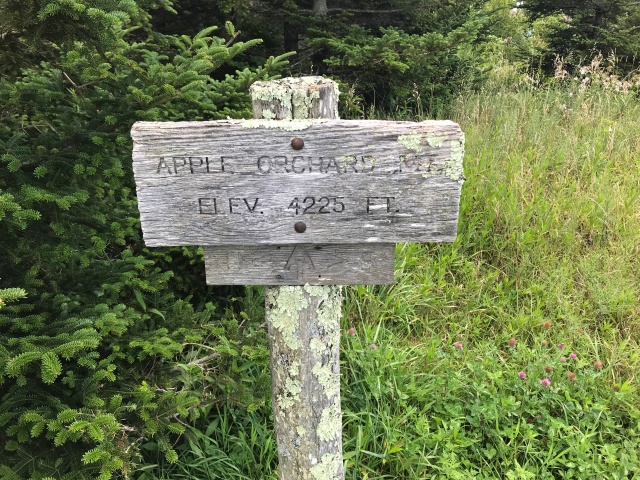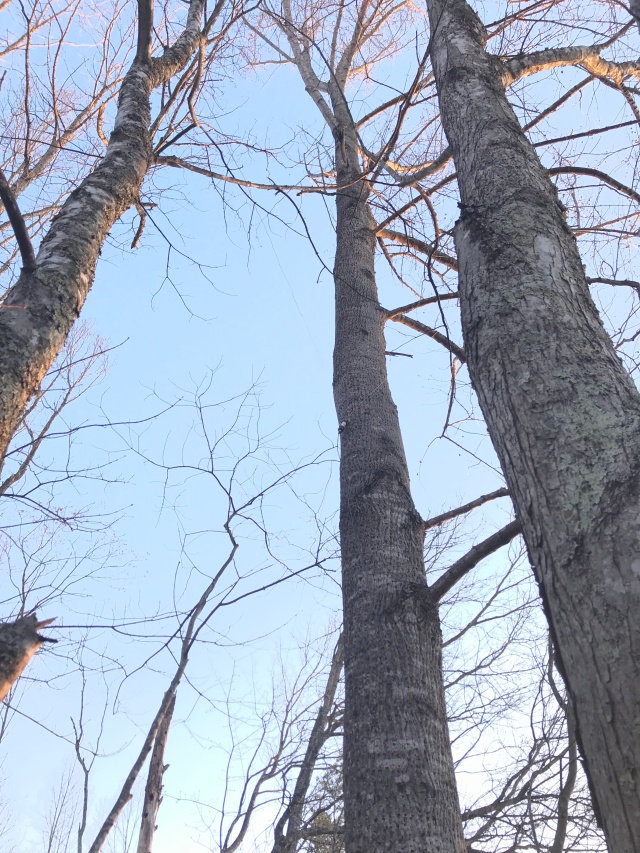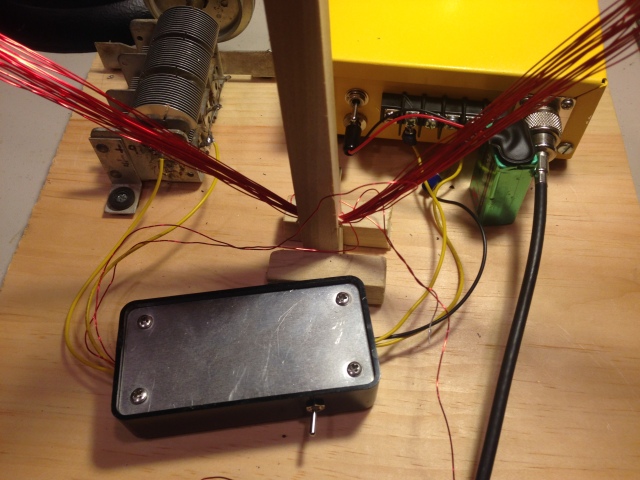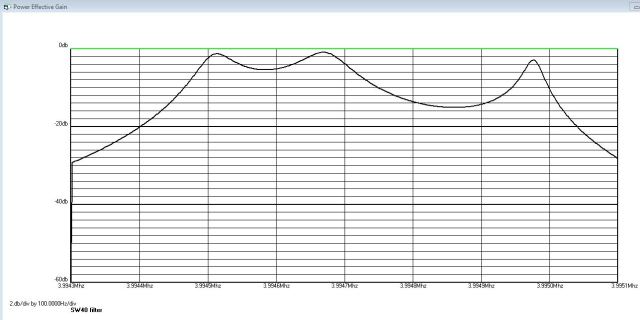
Today was the 2022 CQWW CW contest, and while I haven’t normally posted about operating activities, I decided that it would good to document some of them (before I forget, which is something that happens more as we age, as we all know — or at least as we know till we forget).
This weekend was really the coming out party for my new tower, the US Tower model TX -455, and a homecoming for the Cushcraft A3S tribander (which you can see on top of this tower in the picture above). Also pictured at the top of the tower is the Cushcraft tribander for 2m/70cm (the easy-to-remember model #A270-10S!). The tower was installed end of September, but needed 30 days to cure properly, then had to be inspected, and a couple weeks ago I was ready to install the A3S but discovered I was missing the mast-to-boom plate, so I had to make a quick order to MFJ/Cushcraft to get a quick replacement (thank goodness they still make it, and they were quick to send at reasonable cost).
I had done some limited operating with the A3S in the past week. I worked a Japanese ham on 15m who said he thought I was a west coast station, and was surprised I was only running 100W! I thanked him for the nice complement, and it excited me for the future with this antenna and for the CQWW contest.
The A3S, the VHF/UHF antenna and the rotor all have some nostalgia for me. I was forced to abandon my previous crank-up tower back in about 2004, a similarly sized 45′ crank-up US tower in Tucson. This was due to many “life changes” that took place at that time. I always sort of kept the torch lit for the chance to set up a tower and my antennas again, and through many moves around the country and a career change, I somehow managed to keep these parts together. Now almost 20 years later, to see them working (and working very well!) after such a long downtime is amazing and gratifying. Now I need to make up for some lost time!
I do plan to replace the A3S with a Mosley antenna (with another crazy model number I’m too lazy to look up) that will give me not only 20/15/10 but also 17/12/6. This will allow me to use a single coax for the entire shebang, and give me 3 elements on all of those bands. I couldn’t pass that up! As with many things these days however, there is a significant lag time in delivery, and I won’t see this antenna until January. So, the A3S rides again, for now.
CQWW CW
I missed the CQWW SSB contest because the concrete base was still curing. But I enjoy CW and was anxious to give it a go.
I fired up the good old N1MM contesting software and the Kenwood TS-2000 (also a rig from 20 years ago!) and coupled it to a new Vibroplex iambic paddle (I wanted to change things up a bit from my ~30 year old Bencher) and away I went. A few months ago for fun I got a “Geocron” module and purchased a big TV monitor to display the world map up above the operating desk of the shack. I turned that on so that I could keep track of grayline prop (as well as, for kicks, see the tracks of all the ham sats and some weather patterns). There are free web-based world maps that also show the sun track of course, but this seemed like a cool gadget and I guess I fell prey to some HRO salesmanship as well!

I taped last year’s score — about 30,000 points — onto a trash can facing me as I operated! This gave me some added incentive. I didn’t realize I would do almost 10 times better this year! Phenomenal.
As I say I’m not “A Contester” as such but I do enjoy one or two each year. I’ve grown to enjoy CQWW. I have found that at sunspot minimum and with compromised antennas, it can be an exercise in frustration yelling into a microphone or calling DX stations endlessly with no reply. But with a decent station, it can be a blast. And that’s what I experienced this round.
I started out Friday night at 7 PM EST, right when the contest began. It runs for 48 hours but I rarely spend more than maybe 10 hours total for both days, due to interest, frustration, or just other things I have going on for the weekend. I’m sure I spent more than the usual 10 hours this time though.
I’m sure avid contestors have a game plan laid out in terms of what band at what time. I had a basic idea of what I wanted to accomplish. I decided to start at 20m, knowing that likely 10 and 15 would be mostly dead by then. As it turned out, 20m was also on its way out, but I did make quite a few QSOs there. I then decided I would move down as the night went on. The idea was to end up on 160m around midnight, spend an hour or two there and then go to bed by 1-2 AM.
What ended up happening was a bit different. 40m was HOPPING. I’ve been a ham since 1985, and I’m sure there have been times, maybe on Field Days or one or two other contests like sweepstakes, etc, where the bands have been almost as crowded. But honestly, I just can’t recall a band being THIS DENSE with stations, especially DX. It took all of my skill with the DSP filters on the TS-2000 to carefully navigate between stations. And I ended up spending about 4 hours on that band, just to work from bottom to top! I didn’t even try to hold a frequency, it was all search and pounce (which is really the main way I ever work contests anyway).
So I piled up something like 60 contacts over that span, which although that’s a small number by serious contester standards, that is a TON for me, especially with search and pounce and careful tuning to make sure I was spot on the sender’s frequency (everyone had such narrow band filters on, they would never hear me otherwise). The code speed was also insane, as was pointed out by a local ham club member who I spoke to this evening. Everyone seems to be using keyboard CW and 30-40 WPM, which is very hard to copy by ear unless you are really great at high speed CW. The characters of S, 5 and H can sound alike, and knowing a D from a B (or a 1) can be a challenge, especially coupled with lack of sleep in day 2! My guess is most of the hams are also using software CW decoders although it’s hard to say for sure, as many of those are not great at perfect copy.
I got down to 80m and worked about 30 more before moving down to 160m around 1 AM! I was too tired to do much and honestly “top band” was not in top shape for me. My 160m antenna works pretty great, it’s a full-wave loop at 30 ft. Sure, it would probably perform a lot better at 100 ft, but I was doing great to get it as high as it is on multiple telescoping Rohn masts, so for now I can’t complain about it. I seem to generally hear everything everyone else does, and most of the rag chewers on the band blow my S-meter to 20 or 30 over. I mean, it’s 500 feet of wire after all.
Something I noticed this year which seems different from last year was a sense of improved loop performance. Stations heard me much better on 40m, and stations I could literally barely hear on 80m would call me back first try. This seems new, and the only major change since last year was the installation of 5x60ft buried 6-gauge copper ground wire for the tower’s grounding system. I did run a lead over to the loop antennas ground connection at the feed point. I wonder if some slight improvement in ground conductivity has helped. Other than that, it would have to just be chalked up to propagation. Solar flux was just over 100, which I believe was better than last year’s, but was still not as high as past months of this year sadly.
I decided after a few less than amazing QSOs on 160 I would pack it in at 2 AM. I was able to get up late Saturday morning and jump on 20m for a few QSOs (not many) before spending the day on 10 and 15. Those bands were certainly doing much better than when using the loop last year, but not THAT much better. I guess I really expected a tsunami of signals and what I got was just a little more than before. I attribute that to solar conditions mainly. That night I decided I would focus more on 20m and then 80 and 160 and “gloss over” 40. However, the night had other ideas, and 40m was once again crazy good with stations all around the globe it seemed calling me and densely packed on the dial. So I decided I wouldn’t do much on 80 and 160 and instead pack things up early (10 PM) and get up at 5 AM Sunday and see what I could do on the low bands at that time.
Around 6 AM Sunday I was able to grab a ZL station on 80m. It was a great accomplishment because there was a pileup of stations that, one could easily surmise, were running higher power than I, and probably better antennas. I somehow persevered and found an opening, and snagged him! It was a tough slog for me with 100W, and I had to repeat my call and report many times. The op was incredibly patient (ZM1A, “Jacky”), and in fact I sent him a thank-you email afterward. Down on 160m I had another catch, not quite as great perhaps, of a cuban station. That was memorable because the venerable K1ZZ himself was in a small pileup of stations attempting to work him. At one point, the op paused for a few minutes. When he returned, I was quick to get in my call, and nabbed him before the pileup re-formed!
In general there was a lot more joy on Sunday for the higher bands. When I went to bed Saturday night, my vision was to aim my beam at Europe and work 20 like mad and rack up the points. My goal was to at least break through 100,000 points for the weekend effort. I felt that with my beam at 60 ft, unless the band really collapsed I ought to be able to get some good results. And as it happened, I was absolutely correct! 20 was bonkers, if possible it was even more dense than 40 had been. I had stations literally right on top of one another from the same DX entities (likely they couldn’t hear one another). It took all the skill I had with my rig to dial things in and squeeze between stations. The QSO rates were intense even with search and pounce. Literally every kHz was crammed with 1-2 ops. It felt almost like FT8!
I did get a few new DXCC entities from this weekend of course, and I should finally have my DXCC award now (I never collected cards back in the day, and again I just never did enough contesting or chased it hard enough to collect the award). Now with LOTW, it is fun and easy to collect the credits and I hope to be able to hang the certificate on my wall (along with the WAS) very soon! One of the more memorable contacts was a station in Iceland, who I caught just when he turned on his radio apparently, and got his rare zone. I also worked a small island off the coast of Madagascar, and I worked several Ukranian stations. Japan flooded in on 20m shortly after dark on Saturday night, as expected, and I was again impressed with their operating skill and politeness. And I’m always eternally grateful for these amazing club stations and massively built professional DX stations that can hear a pin drop on Jupiter, and so can easily pull my signal out of the noise and give me the ubiquitous “5NN”.
Concluding thoughts
Contesting can be a lot of fun and CQWW has become one of my favorites. This year, having the debut of a new tower, having the old friend A3S back at my side as well as the trusty TS-2000, and some decent solar conditions made it a real joy to work. I look forward to a few more improvements with radio (a TS-990s upcoming) as well as the Mosely yagi in coming months, and I expect to do a few more contests each year as a regular activity.








































